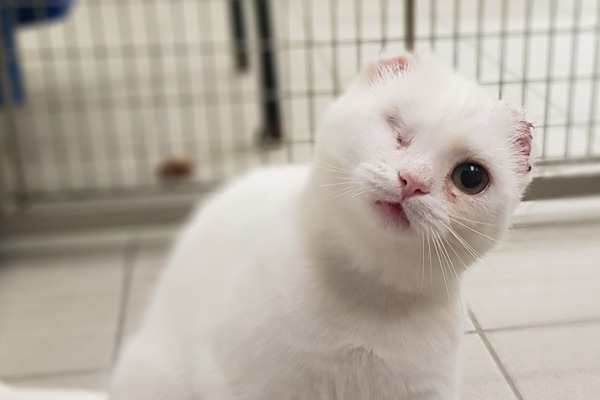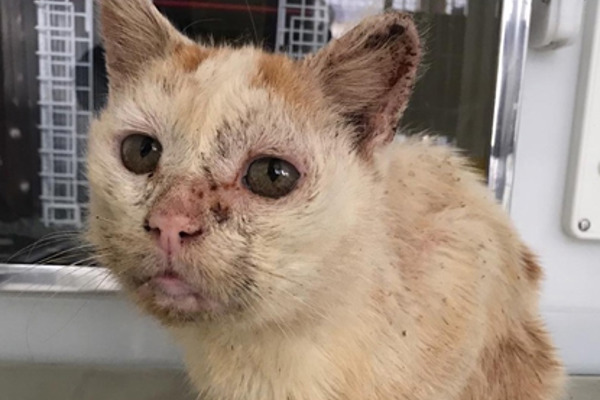Cats Dibbs and Gorgonzola suffered from cancerous sunburnt ears which had to be removed
With predictions that this year is set to be one of the hottest on record, we’re warning owners about the effects of sun exposure on cats this Sun Awareness Week (2-9 May).
According to BBC weather presenter and cat-lover Elizabeth Rizzini, the UK can generally expect summers to become warmer and drier and she has warned of more frequent and intense weather extremes.
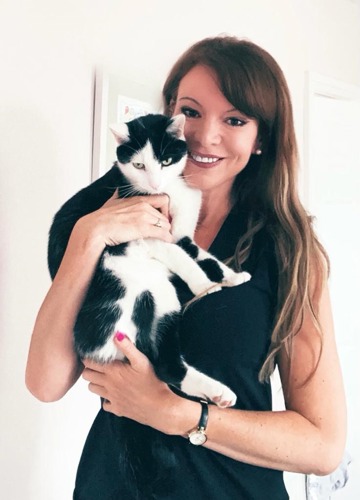 Elizabeth Rizzini with her cat Louis
Elizabeth Rizzini with her cat Louis
“We’re already seeing the effects of climate change across the country – 10 of our warmest summers on record have been since 2002 and heatwaves such as those seen in 2003 and 2018 are becoming much more likely,” said Elizabeth.
Suffering from the effects of sun overexposure, pale-coloured cats Dibbs and Gorgonzola were recently brought into Cats Protection centres. Both had severely sunburnt ear tips that had turned cancerous and needed to be removed.
Dibbs
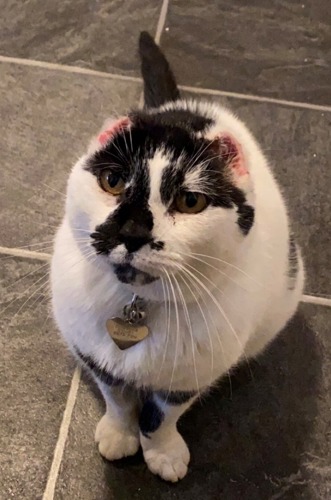
Twelve-year-old Dibbs was brought to our Derby Adoption Centre with severe sun damage to the skin on the outer part of his ears (known as the ‘pinna’) and also tested positive for feline immunodeficiency virus (FIV).
He was rushed to a vet who found that the sun damage had caused skin cancer. Unfortunately, the vet was left with no choice but to remove the pinna section of both of his ears to stop the cancer from spreading. Despite being an older cat, Dibbs quickly found a loving new home and is settling in well.
Jordan Holmes adopted Dibbs with partner Amy Hardy-Wolf. “I was taken aback by Dibbs and his strange appearance,” said Jordan. “Reading his background, I felt so sorry for him and instantly decided that we needed to have him as part of our little family.
“His little face with no ears made my heart break but I knew he would be just as wonderful as any other cat underneath! As soon as we brought him home, he was chilled out, lounging around and asking for cuddles and food constantly.
“Dibbs is the most gorgeous, cuddly, and affectionate cat I’ve ever had the pleasure of knowing. Wherever we are, he wants to be with us – he invites himself onto the sofa and into the bed!”
Gorgonzola
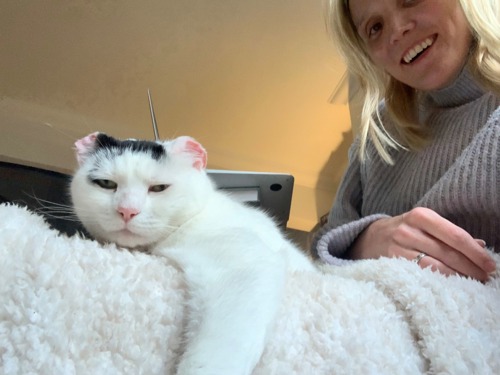
The Mighty Gorgonzola (Gorgonzola for short) was in the care of our York Adoption Centre. The four-year-old moggy sadly suffered severe sunburn and had to have the outer skin of his ears removed to ensure he could stay a healthy cat. Gorgonzola is now happily living with his new owners Helen and Shaun Gibbons in his forever home.
“It was love at first sight!” said Helen. “As soon as I saw his picture on the website, I knew I was taking him home. He was the first cat we saw, and it was a match. He settled in straight away and quickly found his favourite spots around the home.
“Just like us humans, cats are prone to sunburn that can cause long-standing and irreversible damage. We should do all we can to protect them from sun exposure by using sun cream, limiting their time outside during times of the day when the sun is at its strongest, and pulling blinds down to limit their exposure inside too. In the words of Baz Luhrmann ‘wear sunscreen’.
“Our poor Gorgonzola lost both of his ear lobes to sunburn and Cats Protection spent weeks caring for him before he came to us. He's mostly white, so is more susceptible to sun damage. Now the weather is changing, we'll be taking extra care to ensure he's protected.”
 Gorgonzola with his new owners Shaun and Helen
Gorgonzola with his new owners Shaun and Helen
Sarah Elliott, Cats Protection’s Central Veterinary Officer, said: “White and pale-coloured cats don’t have a pigment called melanin in their skin, which is what protects humans from sunlight. This can leave them vulnerable to sun damage – usually around the ears. Over time, the damage caused by the sun’s ultraviolet rays can increase the risk of developing skin damage and cancer.
“Cats with unpigmented noses or ears are also much more susceptible to sun damage and require additional sun protection.”
Though both Dibbs and Gorgonzola have since recovered and now have new homes, we’re keen to make cat owners aware of sun exposure risks, particularly as the UK faces increasingly warmer weather due to climate change.
“The UK’s highest temperature ever recorded was 38.7oC at Cambridge Botanical Gardens on 25 July 2019,” said Elizabeth Rizzini. “However, the UK Met Office projects that heatwaves such as the one we saw in 2018 may well occur every other year by the time we get to 2050, and by 2070 summers could be up to 60oC warmer. Temperatures have already risen on average by a degree across central and eastern areas of England.
“The slightly better news is that we could help to limit these changes by drastically reducing carbon emissions - but this will have to be done on a global scale according to the latest Intergovernmental Panel on Climate Change report released in April. There’s still time to mitigate the effects of climate change but according to scientists it’s now or never.”
Find more advice on how to keep cats safe in warm weather.

